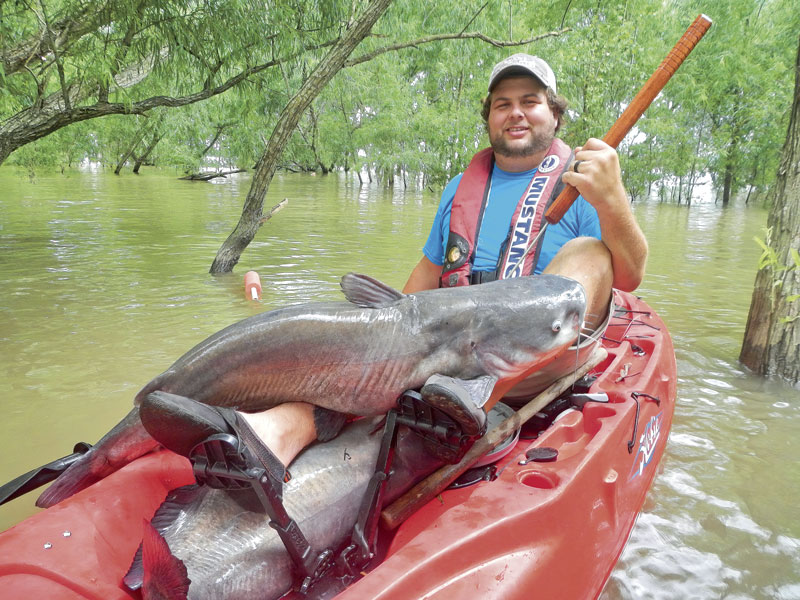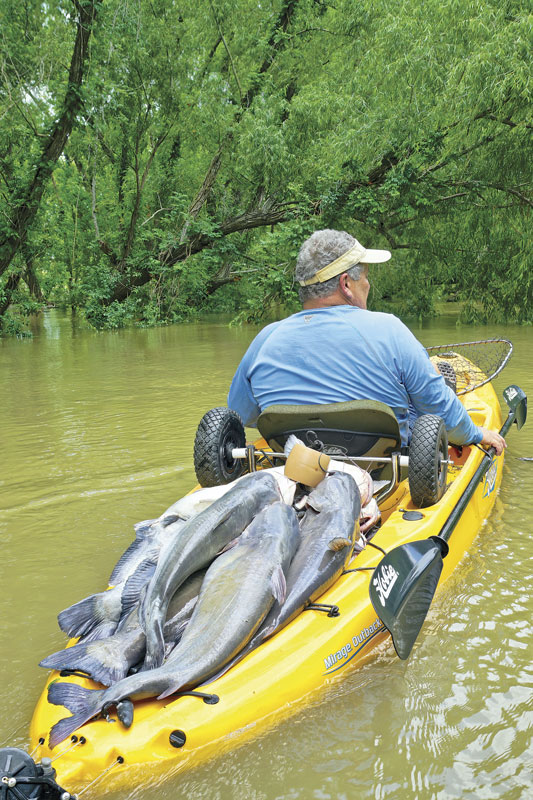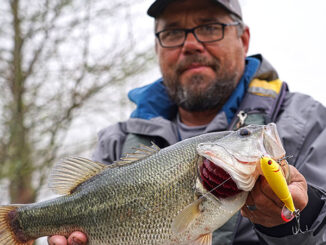
Anglers finding smaller craft are just right to bring Mr. Whiskers home for dinner
Mix up some near freezing temperatures, howling winds, extreme low water and you have a recipe for a miserable kayak fishing day. That is what often greets anglers in late winter. Often, the best thing you can do on those days is to stay home. If it is miserable outside, build up some hall-pass credits by checking items off the honey-do list or take care of those kayak mods or repairs you put off while the fishing was good. Of course, when you get a couple good weather days, be ready to get out and fish.
Catfishing is a specialty in many areas of the country, primarily in freshwater areas. Although not as glamorous or specialized as other species like bass, it has legions of dedicated anglers. Although there is a growing market of specialized rods, reels, baits and lures, catfish can still be caught with basic gear and methods.
Kayak anglers are also realizing that their craft are quite suited for catfishing. Catfish can be caught in almost any freshwater river, lake or pond across the state. However, another reason for the rise in interest in catfishing by Louisiana kayak anglers is that freshwater species have spread into many areas of coastal Louisiana that were formerly inhabited by only saltwater fish. This is due to many areas becoming more brackish than saline due to hurricane protection and coastal restoration projects. The two main saltwater species are hardhead catfish and gafftops (sailcats) and both have generally been considered trash or nuisance fish by saltwater anglers chasing after speckled trout, redfish and flounder.

More common
Incidental catches of blue and channel catfish are becoming more common by inshore saltwater anglers and have piqued the interest of kayak anglers wishing to learn how to specifically target these species. Bow fishermen, pursuing primarily redfish, are also getting into to act with some big catfish being arrowed.
The fact is that catching catfish is fairly simple. While live or dead natural bait is a primary means of catching catfish, they are often aggressive and are incidentally caught on spoons, spinnerbaits, soft plastics and even hard lures. For kayak anglers, getting set up is easy and inexpensive. Gear you use for redfish works well for catfish. A variety of lead sinkers from one to three ounces, circle hooks (4/0 to 10/0 depending on fish size targeted) and some heavy leader is all you really need. Catfish are bottom feeders, but using corks also works well in shallow marsh areas.
Bottom fishing for catfish is primarily a waiting game, so having a couple of stout rod holders on the kayak allows you to fish two lines with ease. A wide variety of bait can be used to attract catfish. Chunks of cut mullet, pogey or shad work well, but any type of natural bait is good. Of course, several big nightcrawlers threaded onto a circle hook works well. In the coastal areas, dead shrimp are also a favorite.
Get control
A large net or small hand gaff is necessary to get control of these powerful fish once you get them to the side of the kayak.
In addition to rod and reel fishing, kayaks make it easy to set and run jugs, limblines and even trotlines. Many kayak anglers like to combine some of these methods.
“At the beginning of the trip, we’ll tie out a few jugs or even set a trot line. We let that sit while having some fun with the fishing rods. At the end of the trip we pick up the other lines and usually have several nice bonus fish to add to the pot,” said James Kellum who regularly kayak fishes for catfish.
Free-floating jug lines also provide some great kayak fun. As long as you are in an area without a lot of current or boat traffic, the jugs can be set where you can keep an eye on them. When a fish is hooked, the jugs are chased down with the kayak to retrieve the fish. It can often be a bit chaotic when several get hooked up at the same time and it becomes a jug-wrangling rodeo. The jugs can also be used stationary by tying them off to trees, branches or pilings.
The good news for coastal kayak anglers is that inland areas where freshwater cats are proliferating are all the popular spots near their favorite saltwater launches. In southeast Louisiana, Hopedale, Delacroix, Shell Beach, Buras, Venice and even Lake Pontchartrain all boast healthy populations of freshwater cats. Docks, pilings, rock jetties and bridges are all good places to look for catfish. Also, they are known to pile up around camps and marinas where fish cleaning tables see tons of scraps and carcasses discarded into the water.
Catfish make great table fare and can be cooked the same way as any other fish. They have liberal creel limits and are easy to catch. Their spread into areas across coastal Louisiana is providing kayak anglers the opportunity for great action and great meals.
Catfish rules check
Make sure you check on the rules, regulations and limits for catfish. They are pretty simple, but do vary by species and areas.
Louisiana Freshwater Catfish Regulations*:
- Blue – 12” minimum length
- Channel – 11” minimum length
- Flathead – 14” minimum length
Limit: 100 per day in aggregate. A fisherman may possess up to 25 undersized catfish of the three species combined.
*Caddo Lake, Sabine River and Toledo Bend Reservoir have specific regulations.


